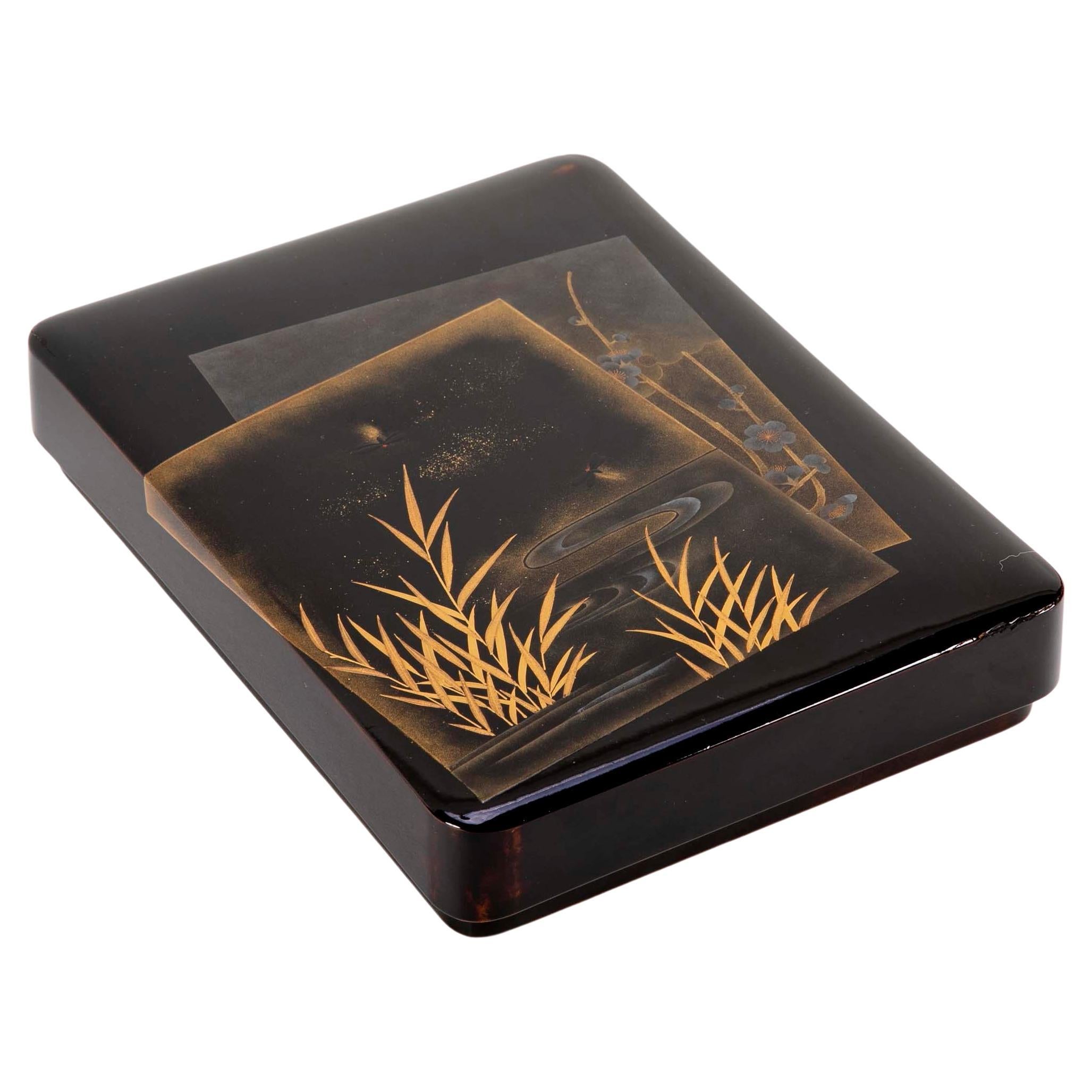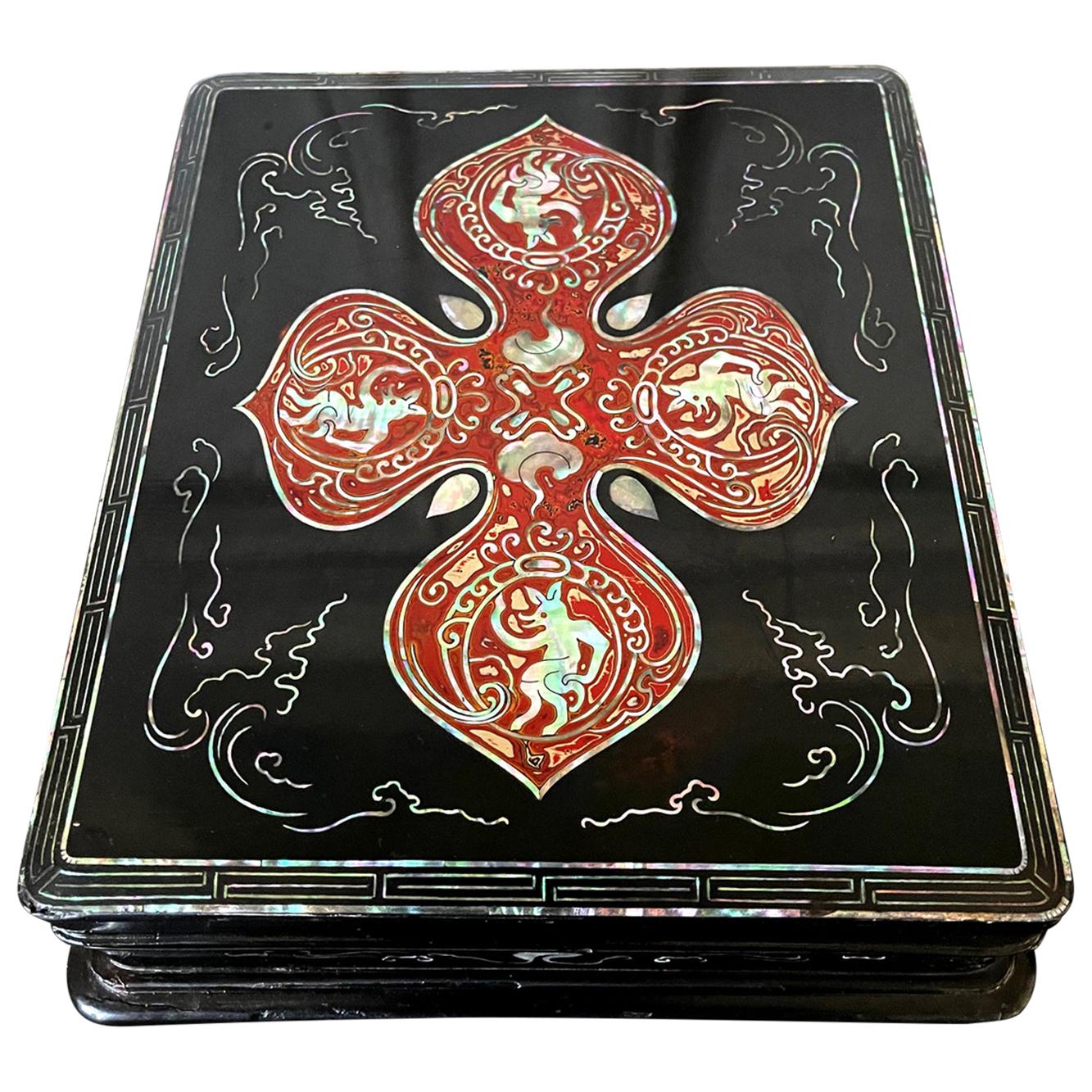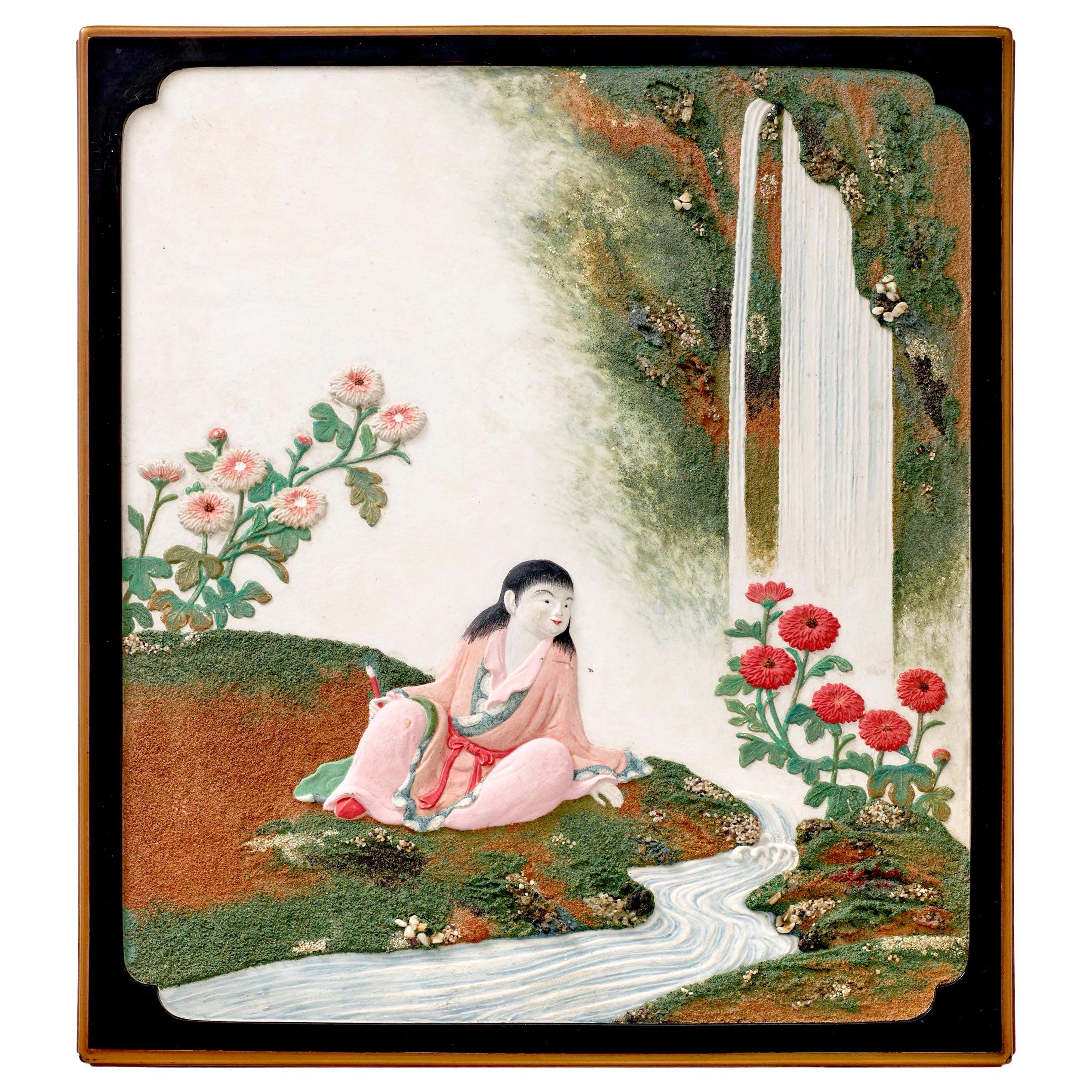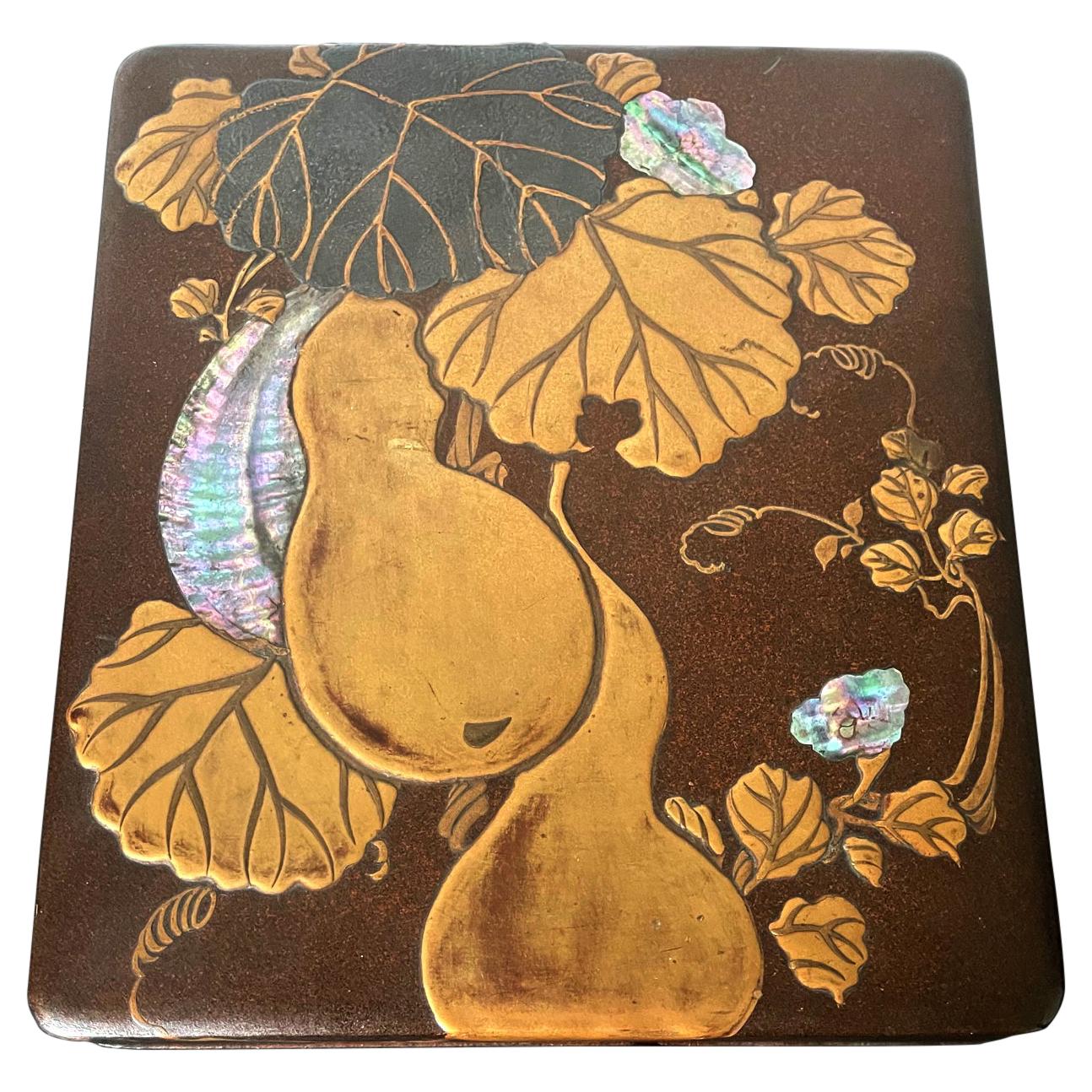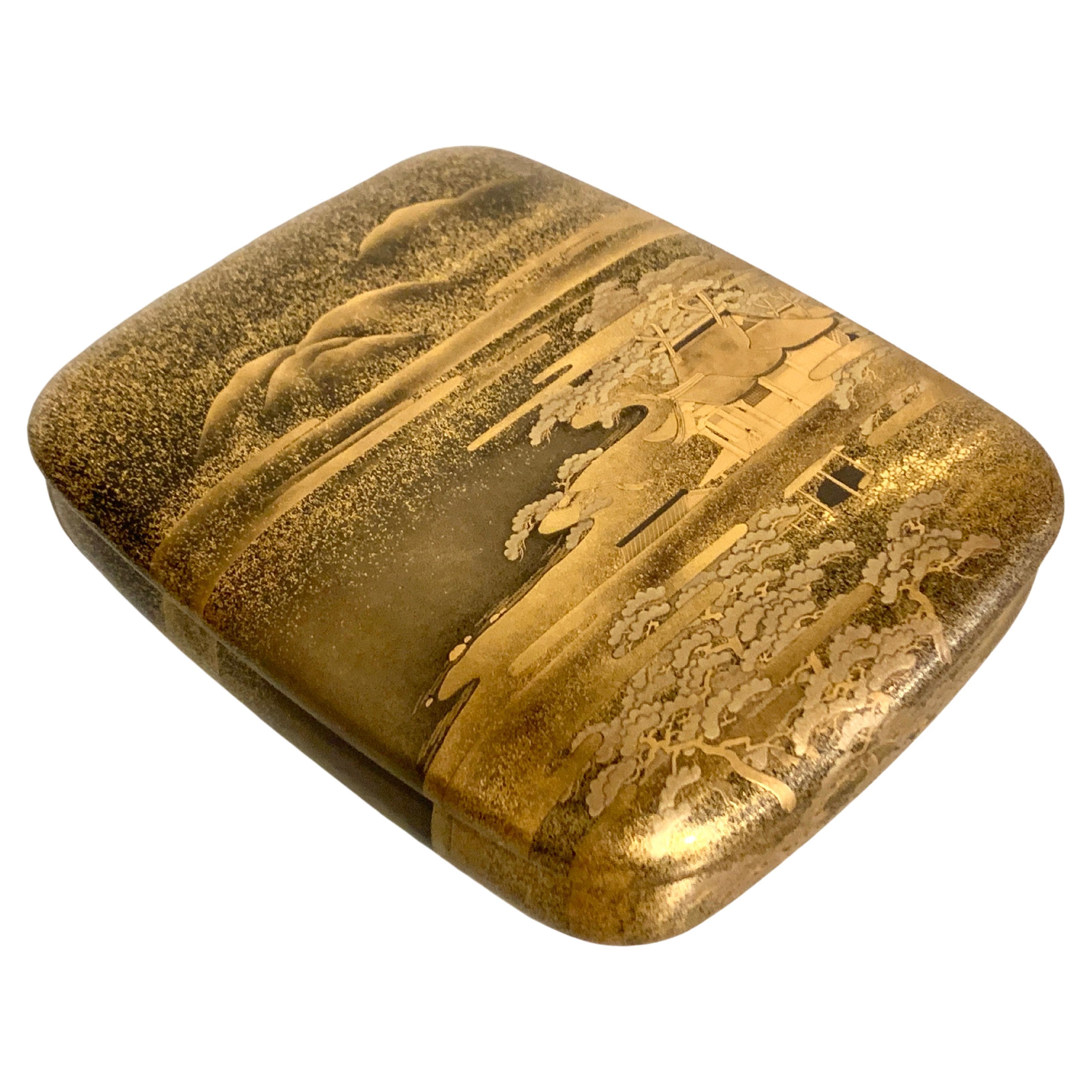Items Similar to Fine Japanese Lacquer Suzuribako 'Inkstone Box'
Want more images or videos?
Request additional images or videos from the seller
1 of 9
Fine Japanese Lacquer Suzuribako 'Inkstone Box'
About the Item
Black and gold maki-e and hirame-ji lacquer box representing a branch of plum tree in bloom which is entangled in a low wall, highlighted by mother-of-pearl inlay (raden).
Inner cover made of nashi-ji lacquer with mizuhiki threads and folds. These are elements, made of silk and washi paper, supposed to bring luck and happiness, intended to seal envelopes on the specifics events (gift, new year, birth, marriage, death, etc.). Shape and color of the threads vary according to the occasion celebrated and the desired meaning.
Interior in nashi-ji lacquer, with water cup decorated with plum tree branches in bloom.
Japan – Meiji era (1868-1912)
Height: 2 in. (5.1 cm) – width : 8.8 in. (22.4 cm) – depth: 9.7 in. (24.7 cm).
- Dimensions:Height: 2.01 in (5.1 cm)Width: 8.82 in (22.4 cm)Depth: 9.73 in (24.7 cm)
- Materials and Techniques:Lacquer,Lacquered
- Place of Origin:
- Period:
- Date of Manufacture:1868-1912
- Condition:Wear consistent with age and use.
- Seller Location:PARIS, FR
- Reference Number:
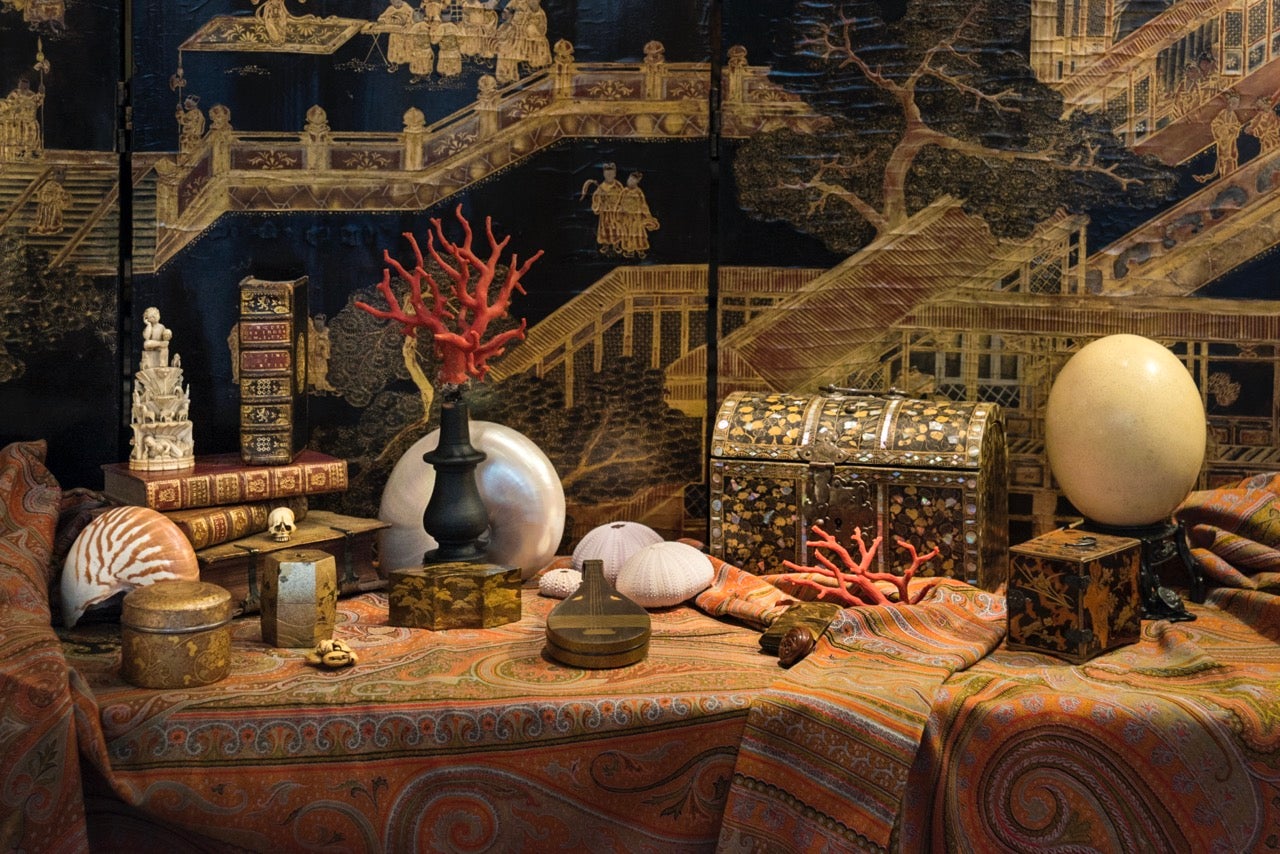
About the Seller
No Reviews Yet
Vetted Seller
These experienced sellers undergo a comprehensive evaluation by our team of in-house experts.
Established in 2013
1stDibs seller since 2023
- ShippingRetrieving quote...Ships From: PARIS, France
- Return PolicyA return for this item may be initiated within 7 days of delivery.
More From This SellerView All
- Japanese suzuribako lacquered box peony riverLocated in PARIS, FRSuzuribako box (empty) in black lacquer. Gold maki-e decoration of a river bordered by peonies, one with red highlights. The edges of the lid are in gold lacquer. Nashi-ji interior.Category
Antique Late 19th Century Japanese Lacquer
MaterialsGold
- Japanese Tiny Suzuribako 'Writing Set'Located in PARIS, FRTiny suzuribako (writing set) in black and gold hiramaki-e lacquer with water plantain (Alisma plantago-acquatica) decoration. Interior in nashi-ji lacquer, with a rectangular water cup...Category
Antique Late 19th Century Japanese Lacquer
MaterialsLacquer
- Japanese Lacquered Tebako 'Box'Located in PARIS, FRTebako box with three compartments in golden and nashi-ji lacquer, decorated with golden, red, and kirigane lacquer, golden persimmon tree leaves, among rocks. The compartments are of increasing size from the top. The decoration is in continuity. Persimmon has been cultivated in southern China for more than 2500 years and is believed to have been introduced to Japan in the 8th century. The veneer is a tree with very hard wood, similar to ebony. According to a legend, one specimen survived the atomic bombing of Nagasaki on August 9, 1945, close to the epicenter. It is therefore in Japan a symbol of strength and longevity. It is also the national fruit of the country. It is eaten as a traditional dish during New Year's Day celebrations. Tebako literally means "portable box...Category
Antique 1860s Japanese Lacquer
MaterialsLacquer
- Fine Japanese Black and Gold Lacquer Sageju-Bako - Picnic BoxLocated in PARIS, FRBlack and gold lacquer sageju-bako (picnic box) decorated with floral motifs in hiramaki-e. It includes a sake bottle, a four-compartment box with nashi-ji lacquer inside, a simple tray and a hollow tray. At the top, there is a bronze handle for transport. The sageju-bako is divided into four superimposed boxes for food on the left; a simple tray, a sake bottle and a hollow tray on the right. They are in the shape of a plum blossom. On the top, on both sides a phoenix. The phoenix (hôo) has an imperial and solar symbolism. This auspicious bird also embodies virtues taken from the teachings of Confucius (such as goodness, righteousness and wisdom). The left boxes are patterned with turtles, plum tree, bamboo, cherry blossoms, water plantains near rivers. The two trays on the right have a shell and seaweed pattern. The sake bottle is decorated with a plum tree and bamboo. On the sides, calabash decoration. Borders in saya (or sayagata) pattern, composed of Chinese swastikas...Category
Antique Early 19th Century Japanese Lacquer
MaterialsLacquer
- Black and Gold Lacquer Suzuribako 'Writing Set'Located in PARIS, FRBlack and gold lacquer suzuribako (writing set) in takamaki-e on a nashi-ji background representing two tigers near rocks, bamboos and plum blossoms in a night landscape. Inside of the lid with a lake landscape. The interior of the suzuribako is composed with an inkstone, topped by a copper water bucket in the shape of a chrysanthemum on the left side, with a brush and a small knife. It includes in the right part a storage compartment. Inscription under the inkstone "Inkstone made by Nakamura Chobe". Although the tiger is not native to Japan, it has a high symbolic. The figure of courage was introduced by Buddhism from China. According to the Chinese tradition, the tiger is from one of the stars of the Great...Category
Antique Late 18th Century Japanese Lacquer
MaterialsLacquer
- Japanese Lacquered Natsume 'Tea Box'Located in PARIS, FRNatsume in dark red lacquer, decorated with autumn leaves and cherry blossoms in hiramaki-e and nashiji. Interior in black lacquer. Maple leaves (Momiji) are celebrated in literatur...Category
Mid-20th Century Japanese Lacquer
MaterialsLacquer
You May Also Like
- Black and Gold Lacquer Japanese Suzuribako BoxLocated in Stamford, CT19th century Japanese black and gold lacquer Suzuribako box with firefly and plum blossom design.Category
Antique Late 19th Century Japanese Decorative Boxes
MaterialsLacquer
- Unusual Japanese Lacquer Inkstone Box with MOP InlaysLocated in Atlanta, GAA Japanese black lacquer box with mother of pearl inlays circa early 20th century, end of Meiji period. It was likely to be used to store inkstone or other scholarly items. The piece displays several interesting characteristics that appear puzzling initially. First, the form is not typical Japanese, but more Chinese and Korean, with its scalloped base. Second, the decoration of MOP inlays also suggests a Korean and Chinese affiliation, especially with the linear borders and the scrolling cloud patters on the sides of the box. These two observations suggest that the box may be from Ryukyu Island instead of Japanese mainland. Third, strikingly in the center of the cover, a bold quarterly floral pattern outlined with MOP was filled with a striking mottled red lacquer using tsugaru nuri...Category
Early 20th Century Japanese Japonisme Lacquer
MaterialsWood, Lacquer
- Rare Japanese Lacquer Writing Box Suzuribako Meiji PeriodLocated in Atlanta, GAA Japanese Lacquer writing box Suzuribako Meiji Period (1868-1912), likely circa late 19th century. This suzuribako is one of the most unusual boxe...Category
Antique 19th Century Japanese Japonisme Lacquer
MaterialsLacquer
- Japanese Rinpa Style Lacquer Ink Stone Box SuzuribakoLocated in Atlanta, GAA Japanese writing box with ink stone (known as Suzuribako) with exquisite maki-e decoration circa late Meiji to early Taisho period (1890s-1930s)...Category
Early 20th Century Japanese Japonisme Lacquer
MaterialsWood, Lacquer
- Japanese Lacquer Stationery Box, Suzuribako, Edo Period, 19th c, JapanLocated in Austin, TXA fine and elegant Japanese lacquer box for writing implements or stationery, suzuribako, with an image of a Shinto shrine, Edo Period, mid-19th century, circa 1840, Japan. The exqu...Category
Antique Mid-19th Century Japanese Edo Lacquer
MaterialsGold Leaf
- Japanese Lacquer Writing Box, Suzuribako, Edo Period, 18th Century, JapanLocated in Austin, TXAn exceptionally fine and unusual Japanese lacquer writing implements box, suzuribako, in the form of a zither, koto, Edo Period, 18th century, Japan. With a modern wood storage box,...Category
Antique 18th Century Japanese Edo Lacquer
MaterialsGold, Silver, Copper
Recently Viewed
View AllMore Ways To Browse
Japanese Antique Bento
Vintage Japanese Bento Box
Japanese Tanzaku
Suzuki Silver
Burmese Lacquerware Betel Box
Burmese Yun
Chinese Chippendale Jewelry Box
Manju Netsuke
Pagan Bya
Temple Ranma Panel
Antique Korean Black Lacquer Mother Of Pearl
Chinese Enamel Smoking Set
Japanese Lacquer Inro Bag
Peranakan Mirror
Rabbit Netsuke Ojime
Sake Storage Container
Vintage Presentation Kimono
Lacquered R Wardrobe

